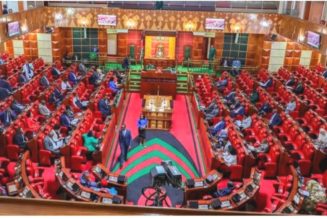Markets & Finance
Property auctions cut bad loans by biggest margin since 2007
Tuesday February 21 2023
The size of defaulted loans in December dropped by the largest monthly margin since 2007. FILE PHOTO | SHUTTERSTOCK
The size of defaulted loans in December dropped by the largest monthly margin since 2007 on increased property auctions and repayment of non-performing debt through restructuring plans.
Central Bank of Kenya (CBK) data shows that non-performing loans shrank by Sh18.8 billion between November and December to Sh487 billion, reversing an upward trend that started after the August 9 General Election.
It also saw dud loans fall below the half-a-trillion shilling mark that had been crossed for the first time in June due to large corporate defaults.
This is the biggest monthly drop in defaulted loans since June 2007 when it fell by Sh28.3 billion after the restructuring of bad loans affecting State-owned lenders.
Banks have recently turned to private treaties where distressed borrowers agree with the lenders to look for the best available price for their properties and sell to repay loans as opposed to relying on the auctioneer’s hammer.
The move has given banks room to get around the Land Act 2012, which bars them from auctioning seized assets at below 75 percent of the prevailing market value in Kenya’s soft economy that has slashed asset prices.
Read: Bad loans see biggest fall in 15 years on assets auctions
Lenders are also renegotiating loan repayment terms, converting bad loans to good books.
The continued recovery of the economy from Covid-19 economic hardships has also helped businesses and individuals resume servicing defaulted loans
“Primarily what has helped us cut our NPLs is customers rethinking their working models and working with the bank… We have had a number of restructures where we have looked at a client’s position to determine what they can afford to pay presently, their cash flows and the option of graduated interest payments,” said KCB Group chief executive officer Paul Russo.
This has helped pull down the stock of NPLs that had risen to a high of Sh514.4 billion in June last year or 14.7 percent of the loan book.
This came amid uncertainty over the 2022 elections that subdued business activities and paused investments.
According to the CBK, the major sectors that recorded falling NPLs in the quarter to December included building and construction, tourism and hospitality, manufacturing, transport, communication and agriculture.
Building and construction have benefited from efforts to pay down overdue bills by the government, with counties managing to clear Sh22.9 billion out of their verified bills of Sh48 billion between June and December last year.
The CBK said in the credit survey report that 54 percent of the banks indicated that NPLs are likely to continue falling in the first quarter to March on the back of enhanced recovery efforts in segments such as households, trade, manufacturing, transport and real estate.
Lenders have also stepped up private treaties—where borrowers and financiers work together to liquidate collateral to recover money—after increasingly finding it difficult to get buyers in auctions due to the high cost of living and a tough economic environment.
Long drawn-out court processes that bog down efforts to dispose of collateral—particularly land— have also forced the lenders to seek alternative sale arrangements.
“Private treaty remains the way to resolve these issues. You can co-sell a building, for instance, or you can help a defaulting customer finish a project,” said Mr Russo.
Read: Prominent Kenyans rush to court to stop auctioneers’ gavel
“We have had a number of big clients who have found people to buy them out, particularly in the hospitality industry, and therefore managed to work out [the issues] without going to court.”
While asset seizures have gone up in the past year, auctioneers have faced problems disposing of the assets in a market witnessing a glut of repossessed vehicles, land, homes and office equipment.









